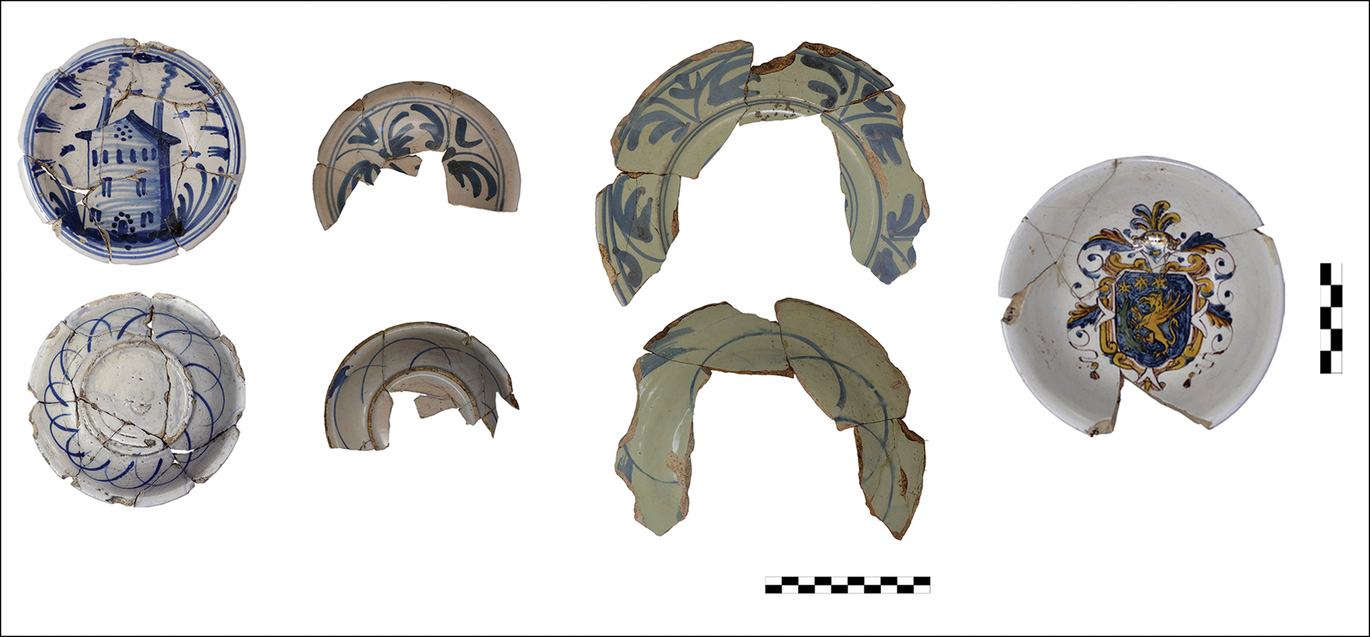Disease control and the disposal of infectious materials in Renaissance Rome: excavations in the area of Caesar’s Forum
New publication by Cristina Boschetti, Laura di Siena, Jan Kindberg Jacobsen, Gloria Mittica, Giovanni Murro, Claudio Parisi Presicce, Rubina Raja and Massimo Vitti.

Boschetti, C., Di Siena, L., Jacobsen, J. K., Mittica, G., Murro, G., Parisi Presicce, C., Raja, R. & Vitti, M. (2023). “Disease control and the disposal of infectious materials in Renaissance Rome: Excavations in the area of Caesar’s Forum”, Antiquity, first view. DOI: https://doi.org/10.15184/aqy.2023.34
A sixteenth-century medical dump
During the Caesar’s Forum excavations, a sixteenth-century closed context was found. Along with coins, ceramic figurines and glass and ceramic fragments, also complete glass flasks and ceramic vessels had been deposited in a brick-built cistern. Even high-quality maiolica ceramics were among the discarded items. But why dispose of apparently functional objects?
In a new article just published by Antiquity (online and Open Access as first view), the excavators and the research team of the Caesar’s Forum Project argue that the assemblage of objects found in the cistern should be interpreted as a medical dump. Urine falsks, ‘single-meal’ cooking vessels, and the tableware of individual patients from the nearby hospital Ospedale dei Fornari found its way to the cistern due to the fact that clinical equipment and potentially infected objects had to be disposed off – as a measure to control the spread of disease.
Cross-contextual study reveals new insights
A similar dump had earlier been found by the hospital, and the objects found in the cistern at the Caesar’s Forum area show great similarity to the assemblage of objects from the hospital.
Using a cross-contextual approach, while also drawing on medical treatises from the Renaissance, the new study explores the measures taken by a dense urban community dealing with epidemics and spread of diseases, revealing new insights into urban waste-management practices.
The Caesar’s Forum Project and the sixteenth century
The Danish-Italian excavations at Caesar’s Forum began in 2017, and throughout the excavation phases and the post-processing of data the project team has focused on the longue durée development of this area in the heart of Rome.
Thus, crucial knowledge about the area in the period leading up to Mussolini’s destructions of large parts of central Rome (in order to build the Via dell’Impero and to expose ancient monuments) have now come to light. From the sixteenth to the nineteenth century, it was a densely settled area called the Alessandrino district. In the early days of the development of this residential area, medical waste was brought here to be dumped, sealed and forgotten.
